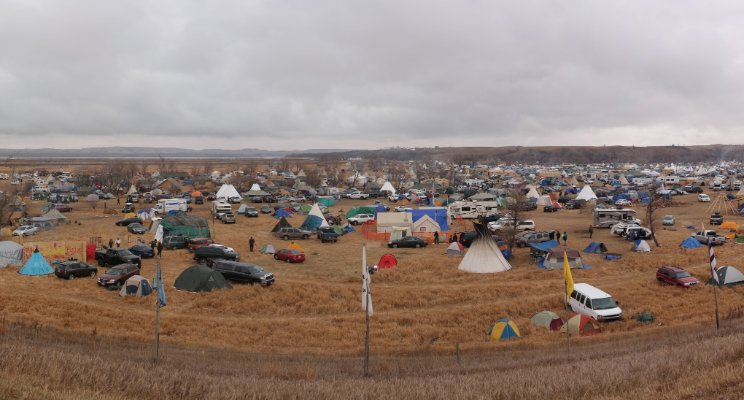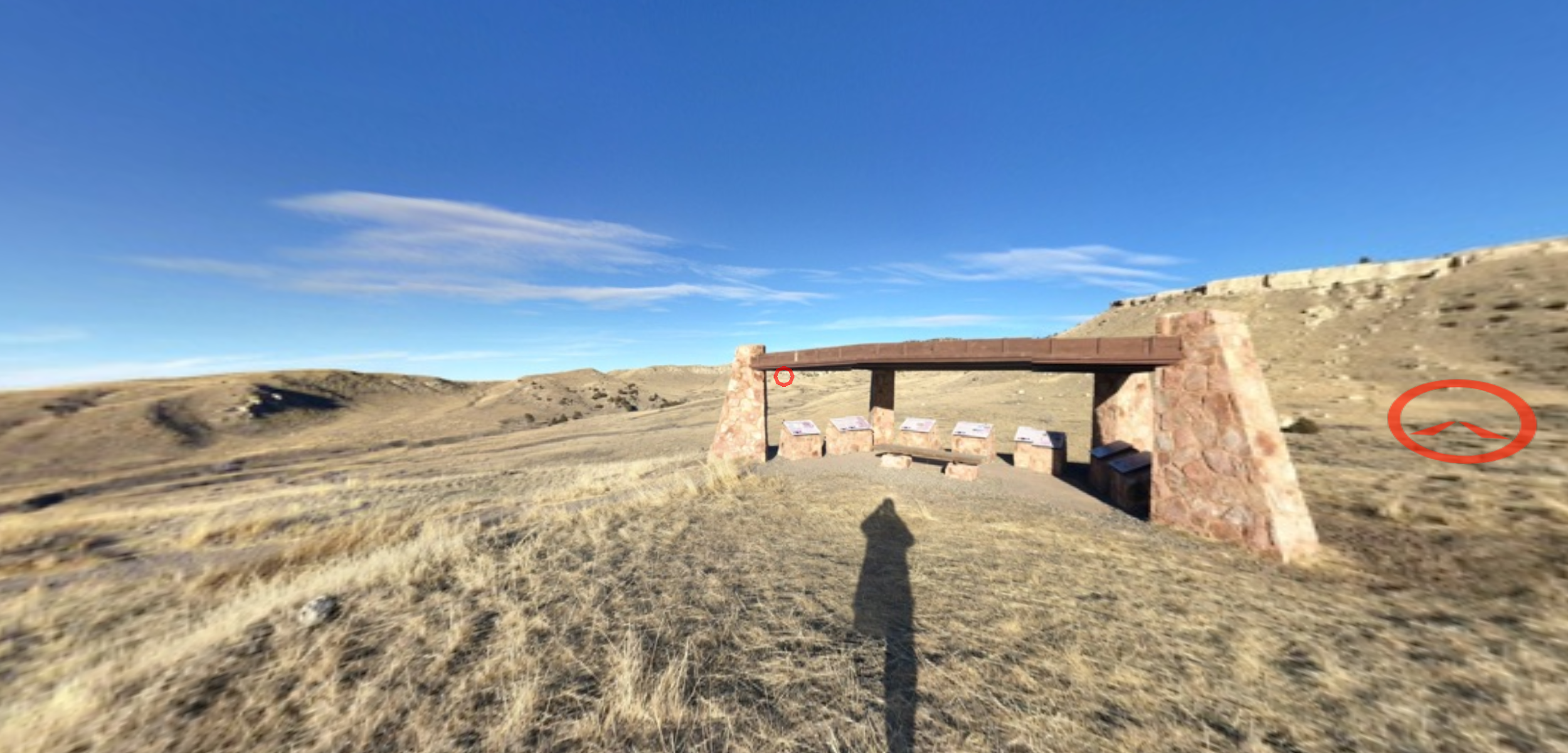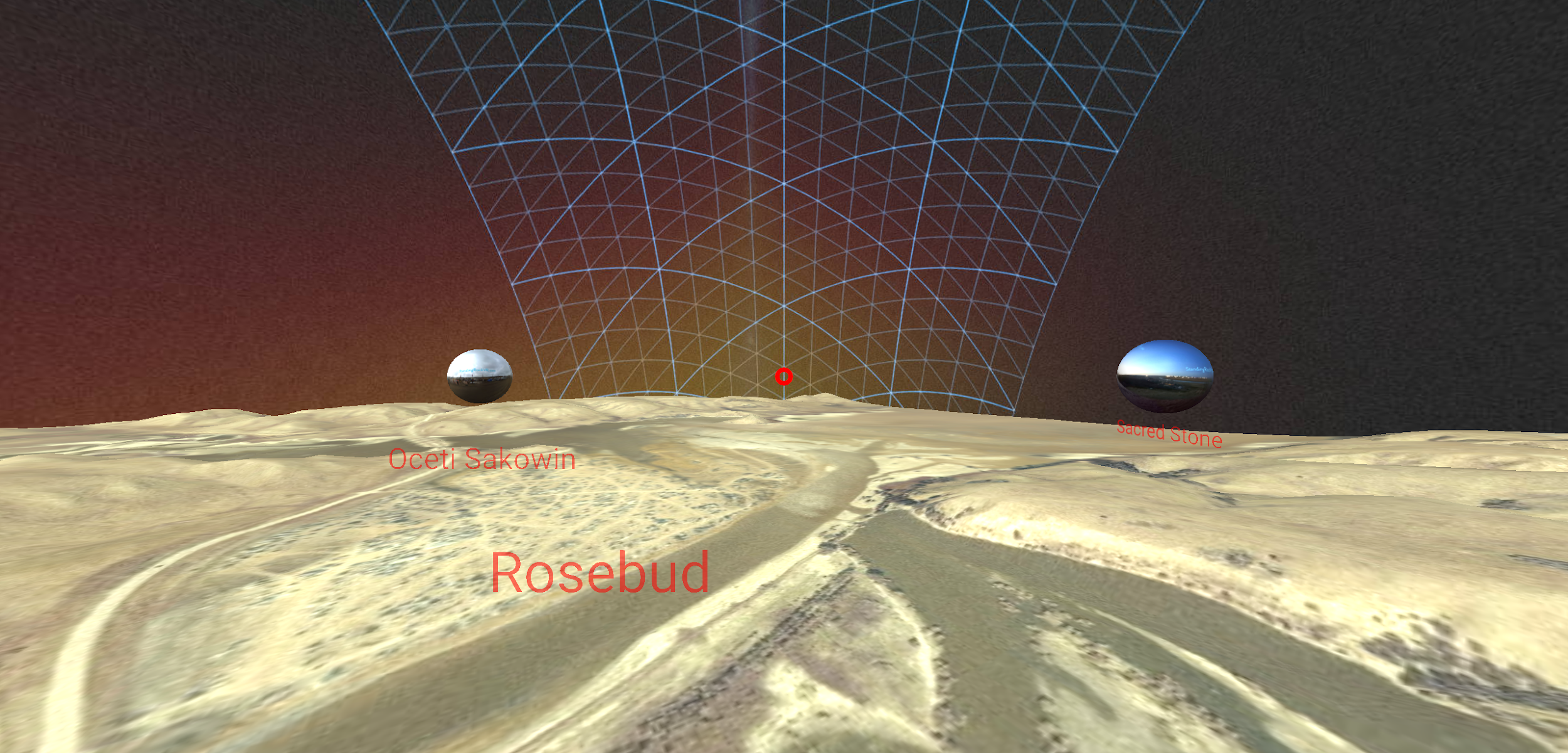Photo courtesy of Michael Running Wolf
Leading a startup and tech panel at South by Southwest, Michael and Caroline Running Wolf took the stage to discuss their experiences as Native Americans, lessons from Standing Rock and the ways they use technology in their activism.
Story by Zoya Zia
The couple are members of different reservations in Montana. Michael grew up on a small village, surrounded by prairie lands. “I am in the Northern Cheyenne reservation, which resisted white occupation and the Crow for centuries,” Michael says. His wife, Caroline, is part of the Crow tribe but lived across America and in Germany. She learned several European languages before graduating with a master’s degree in Native American studies.
While completing her studies in Bozeman, Caroline met Michael at a trailer park. They soon recognized their shared interest in language and culture preservation. Over time, they founded Buffalo Tongue, Inc. as a nonprofit. “From colonization to oppression, there’s a lot of reasons why the languages are endangered, why cultures are endangered,” Caroline says. “We noticed that media has a massive influence on language acquisition in Europe, but in the United States, we are surrounded by a different culture and language with no opportunity to apply our own language and culture.”
Historical processes have shaped the present situation. “Most kids grow up without a clear understanding of who they are, for the most part we are just brown Americans with thousands of years of history and a deep relationship to the land,” Michael says. “In the past, there was a government campaign to eradicate the language and force people into boarding schools.”
Although Michael did not have a phone until the late ‘90s, he decided to become a software developer and use technology to support his community. The Madison Buffalo Jump is a key landmark located in southwestern Montana, used by tribes to lure the buffalo. Through various techniques such as film, photography and scanning, Michael created a digital platform to tie this landmark to culture, language, diversity and art.
Photo courtesy of runningwolf.io.
The couple taught themselves the technologies they used in collecting and scanning artifacts, recording landmarks and preserving their languages and cultures. These initiatives are works in constant progress that must adapt to technological advancement. “We’re just people with tools,” Michael says. “We leverage the tools we have to help ourselves.”
As the couple developed new methodologies, however, there was a constant need to combat misperceptions. “We’re not Jurassic Park, we’re not extinct, we’re not all the same and we don’t all speak the same language,” Caroline says.
Caroline shared statistics that depicted immense language loss, highlighting the importance of programs like the Montana Indian Language Preservation Pilot Program (MILPPP) in which the state government allocated funds to promote goals shared by 14 tribes. “I was shocked to hear that the language fluency of the Crow nation reduced to 20 percent in the past 40 years, down from 90 percent,” Caroline says. “I knew my grandfather was active in language preservation, but it seemed his efforts were not effective.”
When states work with tribal peoples, there is often a disconnect between what is provided and what is needed. As a result, Caroline outlined the indigenous community-centered storywork and how it collects data without exploiting native people. This storywork is based on respect, relevance, responsibility, reciprocity, reciprocity, relationality and representation. “Some white savior might have an awesome idea and give money for something, but they should ask the community what their needs are,” Caroline says. “Don’t explain to indigenous communities how you’re going to save them.”
Standing Rock was perhaps the most visual representation of indigenous solidarity in 2016, as people from all over the world arrived in North Dakota to protest the Dakota Access Pipeline. They gathered in the Oceti Sakowin, a camp confronted by aerial surveillance, militarized police and digital oppression. “Over 20,000 people checked in with the tribal government but there may have been more,” Michael says. “When the media arrived, all at once the airplanes disappeared and the internet worked.”
Photo courtesy of Standing Rock VR
While Caroline recognized the incredible solidarity between peoples at Standing Rock, she was critical of how the media described the situation. “The media would always say there is a small tribe in North Dakota fighting for their water but this is everybody’s water, it is not just a question of whether there’s a pipeline at Standing Rock or not,” Carolina says.
From Standing Rock to the Running Wolfs’ reservations in Montana and beyond, the new indigenous media movement is wide-ranging. “Wherever you’re from, you can do something for your local community, your plant relatives, you water relations,” Caroline says. “Whether that’s raising awareness to treat the water better or working to get recycling going in your community, I just think that we’re all in this together and this planet is smaller than we think.”














































